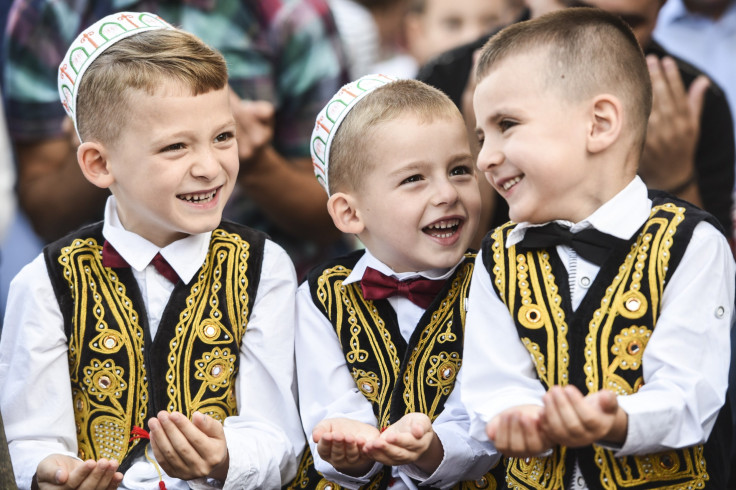When Is Eid Al-Fitr 2017? Dates, Facts, And History About The Day Muslims Break Ramadan Fast

Muslims across the globe are preparing to celebrate Eid Al-Fitr, marking the end of a month-long fast for Ramadan, on either June 25 or 26, depending on when the new moon will be visible to the naked eye.
Since Saudi Arabia, along with other countries of the Middle East started observing the Islamic fast from May 27, they will be completing 29th day of Ramadan on June 24, Saturday. Astronomers calculated that the next new moon will be on June 24, 2:31 a.m. GMT (June 23, 10:31 p.m. EDT ), Moon Tracks reported.
Saudi Arabia will be joined by countries such as United Arab Emirates, Bahrain, Qatar, Egypt, Turkey, Iraq, Iran, Syria, Lebanon, United States and some European nations in keeping an eye out for the crescent moon on Saturday. If they are able to spot a glimpse of the moon, they will be able to celebrate Eid Al-Fitr on June 25, Sunday.
Read: Muslims Around The World Celebrate The Beginning Of Islamic Fasting Month [Photos]
African countries like Libya, Algeria are also expected to celebrate the first day of Eid on Sunday, June 25, given that they are able to view the moon on that day. The same goes for Turkey and Australia.
Asian countries such as India, Pakistan and Bangladesh, carrying the largest Muslim population, will have to wait until June 26, to celebrate Eid Al-Fitr since they began their Ramadan fast a day later than the rest of the world. While they might start searching the night skies for any visibility of the moon from Saturday, chances are they will be able to break their fast no sooner than Monday.
Eid Al-Fitr, whenever a country ends up celebrating it, will usher in the first day of the month of Shawwal.
Moon sightings depend largely on the meteorological conditions. Although, it is an Islamic tradition to break the Ramadan fast only when the new moon is visible with the naked eye, parts of Latin America, the U.S. as well as Saudi Arabia and Yemen might have to depend on optical aids in order to spot the moon and observe Eid Al-Fitr, according to some experts.

Read: When Does Ramadan 2017 End?
All the Muslim-majority countries have the tradition of observing extended public holidays on the occasion of Eid Al-Fitr, a tradition that has been written into the constitution in some countries such as the Philippines, Al Jazeera reported.
The government of UAE has announced that the public sector will observe a five-day holiday for Eid if it is observed on Monday and a three-day holiday if Eid will be on Sunday.
Similar Pakistan has announced a three-day holiday, starting Monday, June 26 for Eid.
Eid al-Fitr is a three-day long feast for the Muslims, which can quickly escalate into a festival in most countries if a large number of people assemble at a single venue. It is a time to put on new clothes and visit one’s loved ones. Food items, gifts, and greetings are exchanged on the occasion, Thought Co. reported.
On the morning of Eid, Muslims gather in nearby mosques or outdoor spaces to perform their traditional prayer which consists of a sermon and a congressional prayer, after which they go off to meet their relatives and friends.
© Copyright IBTimes 2024. All rights reserved.












